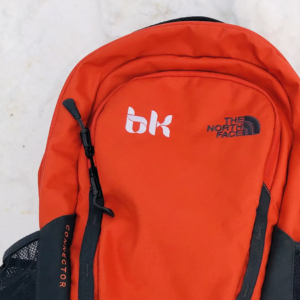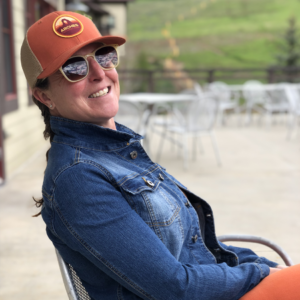NPR Redesigns
Before anyone got their news online, before ‘online’ was even an idea, newspapers ruled the game. Because of their size certain aspects of the layout became hugely important. Headlines and images drew people in to the most important articles, and quick highlights of what lay inside enticed readers further into the paper.
As the daily medium of information delivery for hundreds of years, newspapers have had a huge effect on the way we design for web. The term ‘above the fold,’ for example, referred to the top half of a newspaper’s front page. Size led papers to be folded in half, meaning the first thing readers saw was, quite literally, above the fold. Today, we use the same term to describe the portion of a website that is visible on your screen before you scroll. As with newspapers, the area above the fold is extremely important and should encourage readers to continue on.
Despite all of the influence newspapers provided, many of the biggest names in the industry are still struggling to successfully transition their business models to the web. While the main issue remains the abundance of free knowledge and news elsewhere on the internet, another hurdle that has lasted surprisingly long is the overall transitioning of layout.
While there are some similarities in the way newspapers and websites are laid out, many news organizations took it a bit too far and have been slow to change. Multiple columns packed with headlines, teasers, photos, links, and ads mimic a printed front page, but are often overwhelming for web users.
This tactic oftentimes makes the pages too busy: by trying to feature everything, no one thing commands enough attention to truly stand out and everything gets lost in the mix. Today, web trends (and most web users) prefer a cleaner, less cluttered design where elements are easily scannable; less is more.
Last Wednesday, National Public Radio (NPR) launched a redesigned homepage. While NPR was never in the paper biz, as a news organization they fell prey to the same ideas that make other news websites so tough to handle: too much and too similar.
Out With the Old Click to View
On the old homepage, we were immediately met with nine stories, three of which have associated images, four of which have headlines in the same size/weight font but spread over two columns. The only words that stand out from the largely black-on-white page are “news,” “all tech” and “viewed,” which aren’t even important stories meant to grab us… they’re just parts of section names (and they’re all in practically the same color, anyways).
Because of this largely monochromatic layout, the solid block and knocked-out lettering of the Dave Mathews Band ad is the one element that truly grabs your attention. That may be a great way to sell some ad space, but with internet users becoming increasingly cynical about online advertising, it’s also a great way to agitate some readers.
Even as you move down the page, three columns compete, almost equally, for your attention. Here, at least, three distinct colors are used to differentiate between sections, but there is so much information crammed onto the screen that your eyes are more likely to bounce back and forth around the page rather than settle on one thing.
In With the New Click to View
Their new homepage, if I do say so myself, is slick. Right off the bat you’re greeted with just one story that demands your attention. Nine additional stories in the right column bring the total to 10 (more than their old homepage) but because they’re neatly organized in one column and in a less commanding color than the main story, they are easily scannable and do not distract.
The entire page still utilizes a 3-column backbone as before, but here you never have more than two elements on a single row. All of the main stories span either two or three columns, so while your gaze may shift from side to side, the majority of information you see at any one time is in regards to a single story.
Instant Action
NPR has also done a great job at incorporating more ‘instant’ functionality into the page. Now that stories get more real estate, each one gives readers the ability to read comments, share on Facebook and Twitter, view more articles in the same category, and in some cases listen to the radio spot or view closely related articles, all without feeling cluttered or overwhelming.
Since Wednesday, NPR has reverted from the sleek 3-column ad back to the smaller, more standard looking above-the-fold ad. The 3-column ad fit so seamlessly into the layout that the reason I liked it and the reason they changed it are likely the same: it wasn’t so annoyingly obvious.
Overall, this homepage is a great move for NPR. It brings them up to speed with a number of recent web trends, all of which greatly increase the user experience. If I didn’t already listen to NPR for close to an hour each morning and afternoon during my commute, this is a site that I would gladly browse to get a daily dose of news. Slowly scrolling down the page one story at a time makes the experience almost relaxing compared to the frantic power-struggle that was their old homepage.
After all, when so much of the news these days is worrisome and stress-inducing, does the delivery of it have to be as well?
Eric Palmer. BKMedia News–I mean Group, Longmont.
Other Articles
Navigating the Off-Season: Marketing Strategies for Outdoor, Overlanding, and Camping Brands
The world of outdoor adventure, overlanding, and camping is fueled by the passion for exploration, nature, and the thrill of...
Mastering Black Friday Cyber Monday Campaigns: Strategies for Outdoor Retail Brands
Black Friday Cyber Monday (BFCM) has become a pivotal period for businesses across various industries, and the outdoor retail sector...
Why Outdoor Retailers Must Plan Black Friday Cyber Monday Campaigns Well in Advance
For online retailers in the outdoor industry, the Black Friday Cyber Monday (BFCM) weekend represents a significant sales opportunity. However,...



